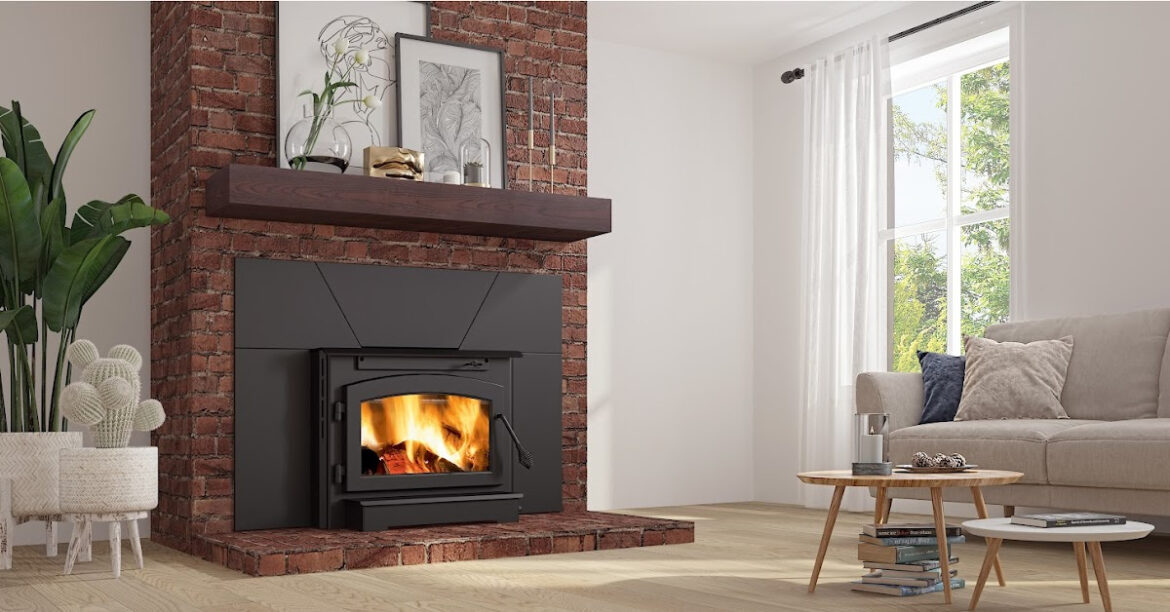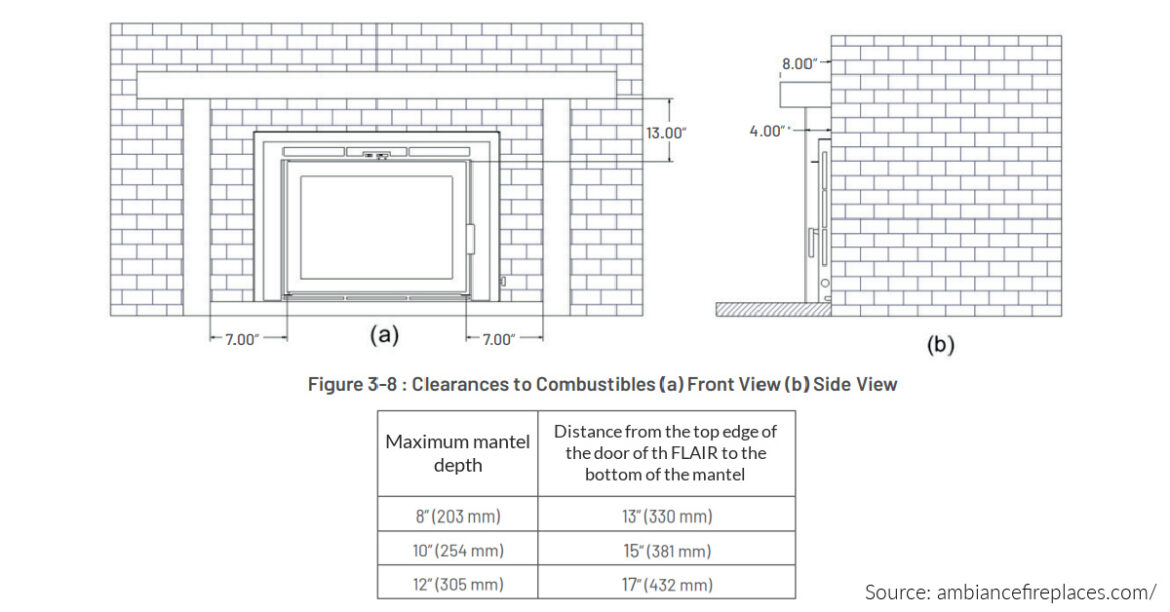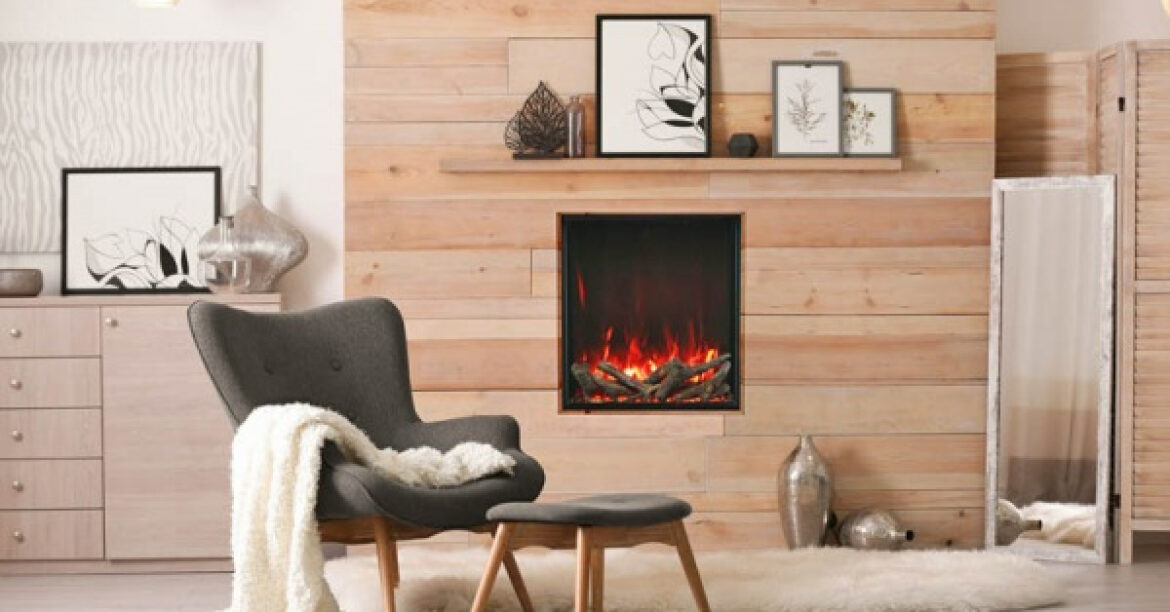Revised May 28, 2024
Building a fireplace mantel can be a rewarding DIY project, but getting it right for safety and aesthetics is crucial. Before you start, we recommend consulting with your local WE LOVE FIRE® experts. They can help you determine the correct clearances for your fireplace, offer design advice, and even provide a cost estimate for a custom-built or pre-fabricated mantel. A professionally crafted mantel might surprise you with its affordability!
However, if you want to build your wooden mantel, keep reading. You will need to remember several details as your project moves forward.
Whether you’d like to update an existing fireplace or install a new one as part of a remodeling or building project, fireplace mantels give that fireplace character and charm. They showcase precious family photos and mementos. They’re an extension of you and your lifestyle. But remember, clearances are not just a suggestion but a critical safety measure for wooden fireplace mantels.

Wood Fireplace Ambiance with the Ambiance Mantel The Lexington
CLEARANCES ARE CRITICAL
Besides mounting a mantel firmly on a wall so it doesn’t fall, the most important thing to remember about a wooden mantel is the mandatory clearance requirements. Whether it’s a gas or wood fireplace, clearances refer to the distance from the top and sides of the fireplace opening to anything combustible, including a wooden mantel.
Fireplace mantels can be made from solid wood, MDF board, or laminated plywood. All are combustible. Fireplace clearances to wood mantels or anything that can burn are not optional. You must ensure clearances are maintained. Because of the stains and sealants often used in wood, mantels without proper clearances will overheat. They can actually get hot enough to ignite and burn.
ALL clearance requirements must be followed to the letter! It is critical that you follow the clearance requirements for your specific fireplace model. This information is readily available and clearly outlined in the owner’s manual. Remember, these requirements are not suggestions but essential for your safety. If you need help, check with your WE LOVE FIRE® expert.
Whether it’s a gas fireplace or a wood-burning model, mantel clearances vary from one fireplace to the next. Spend some quality time reading the owner’s manual for your fireplace. Understand all installation requirements, including those for a combustible mantel. Checking any specific local codes that may apply would also be a good idea.
This is an important reminder we’ve mentioned before: as with all clearances, not just mantel clearances, remember the rule: ‘more is better’! Add two or three inches to any clearance requirement. If the manufacturer says 6″, there’s nothing wrong with 8″. If the requirement for combustibles is 18″, go with 20″ or 22″. You get the idea. It’s like that extra scoop of ice cream on a hot summer day: MORE IS ALWAYS BETTER!
What Size of Fireplace Mantel is Right?
You want the mantel to look “proportionally correct.” Consider the size of the fireplace, the finishing material around the fireplace, the size of the room, and the ceiling height. In most cases, most mantels are five to seven feet long. Barn beams or large timber or log mantels are sometimes larger, but most mantels are usually about six feet long.
The depth of the mantel, that is, the distance from the wall to the front edge and sometimes called a “shelf,” is usually less than 10”. Most are in the range of 6” – 9” deep. A 1” x 8” board, regardless of species, is ¾” x 7¼”. Lots of do-it-yourselfers use a 1” x 8” for the top “shelf” of the mantel. It is important to note that there is a direct relationship between the depth of the mantel and how high the mantel is to be hung above the fireplace. This sketch is from an owner’s manual and shows this specific fireplace’s depth/height relationship. 
Dimensions and Mounting Basics
We won’t provide detailed plans or woodworking techniques for building the mantel itself. We trust you have the necessary skills if you’re building your own. As a general guideline, many wooden fireplace mantels are roughly 6 feet long, 7 ¼ inches deep, and between 5 and 12 inches high.
However, we’d like to share a proven method for securely mounting your mantel to the wall: using a mitered hanger board, also known as a French cleat.
Step-by-Step Guide to Mounting Your Fireplace Mantel
-
Create the French Cleat: Rip a 2″ x 4″ board lengthwise at a 45-degree angle. This creates two identical pieces with angled edges.
-
Mount the Wall Bracket: Secure one piece of the cleat to the wall, ensuring you screw it into solid framing members (studs), not just drywall. Carefully measure the mounting height, accounting for the manufacturer’s minimum mantel clearance requirements. Drill pilot holes to prevent the wood from splitting and ensure the wall bracket is perfectly level.
-
Attach the Mantel Bracket: Screw the other piece of the cleat (the “mate”) to the back of the mantel upside down.
-
Hang the Mantel: The angled edges of the cleats will interlock, allowing you to simply hang the mantel onto the wall bracket. Ensure a snug fit for stability.
Additional Tips:
- If your mantel has corbels, a breastplate, or legs, attach them before mounting it to the wall.
- When determining the overall mantel width and the wall bracket’s height, consider the legs’ height and clearance requirements for mantels with legs.
Important Note: Always check and adhere to your fireplace manufacturer’s mantel clearance requirements. These are crucial for safety.
Fireplace Mantels for Electric Fireplaces
You can install mantels for electric fireplaces using the same techniques described above. However, the heat from an electric fireplace is substantially less than from a gas or wood-burning fireplace. Whether the heat is top-vented or bottom-vented, clearances are not an issue with an electric model. The specific mounting height for a wooden mantel for an electric fireplace can be determined wherever the homeowner prefers.

Amantii Electric Fireplace










